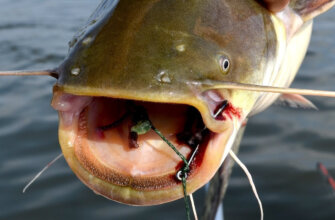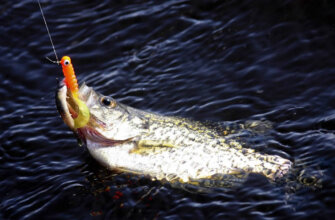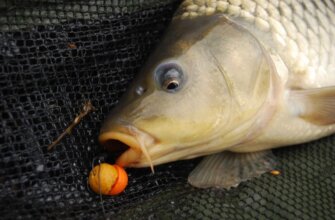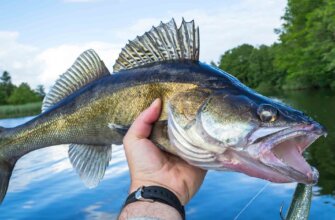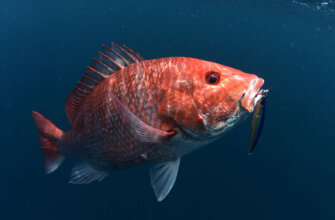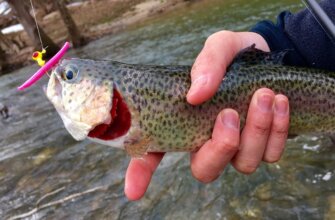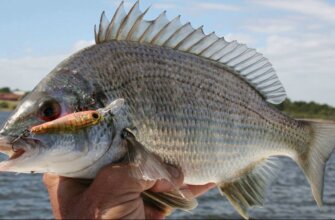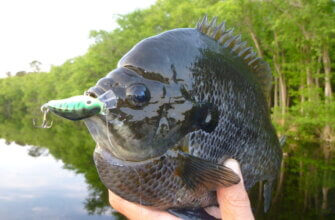Catfishing is a popular fishing activity where anglers use various types of bait to catch catfish, including live bait, cut bait, and artificial lures. To catch catfish using these baits, anglers typically cast their lines near structures in the water that catfish are known to frequent, such as rocks, logs, or underwater drop-offs.
When fishing with live bait, anglers may use small fish like minnows or shad, or they may use other live creatures like worms or crayfish. The live bait is typically rigged on a hook and then cast out into the water. Anglers may also use a bobber or other type of float to help them keep track of where their bait is in the water.
Cut bait is another popular type of catfishing bait. This involves cutting up pieces of fish, such as shad or herring, and using them as bait. The angler may either use the cut bait as a whole or cut it into smaller pieces, depending on the size of the catfish they are targeting. The cut bait is then rigged on a hook and cast into the water.
Artificial lures, such as plastic worms or crankbaits, can also be effective for catching catfish. These lures are designed to mimic the movement and appearance of live bait and are often used when fishing in areas where live bait is not readily available.
Once the bait is in the water, anglers may use a variety of techniques to entice catfish to bite. This may involve slowly dragging the bait along the bottom of the water or using a jigging motion to make the bait appear more lifelike. When a catfish takes the bait, anglers typically feel a strong pull on their line and may need to use a steady, firm hand to reel the fish in.
Best baits
Catfish are known for their voracious appetites and will feed on a wide variety of baits. Here are ten baits that are commonly used for catfish fishing:
- Nightcrawlers: These worms are a great all-purpose bait that catfish love. They are readily available and easy to use.
- Chicken Liver: Chicken liver is another popular bait for catfish, and it is often used by anglers who are fishing in rivers and streams.
- Shrimp: Shrimp is an effective bait for catfish, particularly when fishing in brackish or saltwater.
- Stinkbaits: Stinkbaits are made from a variety of ingredients, including cheese, garlic, and other strong-smelling substances. They are designed to create a strong odor that catfish find irresistible.
- Dough Balls: Dough balls are made from flour, cornmeal, and other ingredients. They are often used by anglers who are fishing for channel catfish.
- Cut Bait: Cut bait is simply pieces of fish that are used as bait. Many anglers prefer to use oily fish, such as mackerel or herring, for cut bait.
- Live Bait: Live bait, such as minnows, shad, or bluegill, can be effective for catching catfish.
- Prepared Baits: Prepared baits are a type of stinkbait that is pre-made and sold in jars or tubes. They are easy to use and can be effective for catching catfish.
- Hot Dogs: Believe it or not, hot dogs can be an effective bait for catfish. They are particularly effective for catching channel catfish.
- Crawfish: Crawfish are a natural food source for catfish, and they can be an effective bait when fished in areas where crawfish are abundant.
Nightcrawlers

Nightcrawlers, also known as earthworms, are a popular bait option for catfish fishing. Catfish are bottom-dwelling fish that have a keen sense of smell and are attracted to the scent of natural bait like worms. Nightcrawlers are particularly effective because they emit a strong scent that can attract catfish from a distance.
Here are a few things to consider when using nightcrawlers for catfish:
- Size: Choose nightcrawlers of appropriate size for the type of catfish you are targeting. Larger catfish species may require bigger worms, while smaller catfish can be caught using smaller worms.
- Rigging: When rigging a nightcrawler for catfish, you can use a variety of methods. One common approach is to thread the worm onto a hook, leaving a portion of the worm dangling freely. This allows the worm to move naturally in the water, attracting catfish. You can also use multiple worms on a single hook or even use a worm harness to present the bait effectively.
- Presentation: Catfish are bottom feeders, so it’s crucial to present the nightcrawler close to the lake or riverbed. Cast your line to areas where catfish are likely to be, such as near structures, submerged logs, or deep holes. Allow the worm to rest on the bottom, and periodically lift and drop your rod tip to create movement and attract attention.
- Scent enhancement: To increase the appeal of nightcrawlers, you can enhance their scent by soaking them in attractants like fish oils, garlic, or commercial catfish attractant sprays. This helps to create a stronger odor trail in the water, making it easier for catfish to locate your bait.
- Patience and observation: Catfish can be patient and deliberate when it comes to taking bait, so it’s essential to exercise patience while waiting for a bite. Monitor your fishing line for any signs of movement or tension, as catfish often nibble or pick at the bait before fully committing to a strike.
Chicken Liver

Chicken liver is a commonly used bait for catfish fishing. It is an effective option because catfish are attracted to the strong smell and taste of liver. Here are some key points to know about using chicken liver for catfish:
- Freshness: Fresh chicken liver is generally more effective as bait compared to frozen liver. Fresh liver releases stronger odors that can attract catfish from a distance.
- Preparing the bait: To use chicken liver as catfish bait, you can cut it into small chunks or use it whole, depending on the size of the catfish you are targeting. Some anglers prefer to wrap the liver in a cloth or mesh bag to keep it on the hook securely.
- Hooks: You will need to use strong hooks when using chicken liver because it can be soft and easily torn off by smaller fish. A treble hook or a circle hook is commonly used for chicken liver bait, as they provide better hooksets.
- Catfish species: Chicken liver is particularly effective for channel catfish and smaller species of catfish. Larger catfish, such as blue catfish or flathead catfish, may require larger baits or live bait options.
- Attractants: To enhance the effectiveness of chicken liver, some anglers choose to add additional attractants. Common options include garlic powder, cheese, or commercial catfish attractants. These additives can help create a stronger scent trail, increasing the chances of attracting catfish.
- Fishing technique: When fishing with chicken liver, you can cast your line and let it sit on the bottom of the waterbody, where catfish are likely to be found. Alternatively, you can use a slip sinker rig or a bottom rig to keep the bait stationary. Pay attention to any signs of fish biting, such as line movement or a sudden jerk, and be ready to set the hook.
Shrimp

Shrimp can be an effective bait for catching catfish, especially in freshwater environments. Catfish are known to be opportunistic feeders and are attracted to a wide variety of scents and flavors. Shrimp emit a strong odor that can be enticing to catfish, making them a popular choice among anglers.
Here are some tips for using shrimp to catch catfish:
- Fresh or Frozen Shrimp: You can use either fresh or frozen shrimp as bait. If using frozen shrimp, make sure to thaw them before fishing. Fresh shrimp tend to have a stronger scent, which can be more enticing to catfish.
- Whole or Cut Shrimp: You can use whole shrimp or cut them into smaller pieces, depending on the size of catfish you are targeting. Whole shrimp may attract larger catfish, while smaller pieces can be effective for smaller species.
- Bait Presentation: To maximize your chances of attracting catfish, thread the shrimp onto your hook, ensuring it is securely attached. If using smaller pieces, you can use a treble hook or multiple hooks to increase your bait’s visibility.
- Scent Enhancement: Catfish rely heavily on their sense of smell to locate food, so you can enhance the shrimp’s scent by marinating it in a strong-smelling attractant. Popular options include garlic, anise oil, or commercial catfish attractants.
- Depth and Location: Catfish are bottom dwellers, so you’ll want to fish near the bottom of the water body. Cast your bait into areas with cover such as submerged logs, rocks, or deep holes where catfish are likely to hide.
- Patience and Technique: Catfish can be slow and deliberate feeders, so it’s important to be patient. Allow the catfish to fully take the bait before setting the hook. Use a medium to heavy fishing rod and reel combo, as catfish can put up a good fight.
Stinkbaits

Catfish are known for their keen sense of smell, and using a strong-smelling bait can attract them to your fishing spot. Here are a few popular stinkbaits that are commonly used for catfish:
- Blood Bait: Blood bait, such as chicken blood or beef liver, is a common stinkbait for catfish. It produces a strong scent that can be very attractive to catfish.
- Cheese: Certain types of cheese, such as Limburger or strong-smelling soft cheeses, can be effective stinkbaits for catfish. The pungent odor of cheese can entice catfish to bite.
- Shrimp: Fresh or frozen shrimp, especially those that have been left out to develop a strong odor, can be used as a stinkbait. Catfish are known to be attracted to the smell of decaying shrimp.
- Punch Bait: Punch bait is a specially formulated stinkbait that is typically sold in jars or tubs. It often contains a combination of strong-smelling ingredients like fish oil, cheese, garlic, and other additives that can attract catfish.
- Homemade Recipes: Many anglers prefer to make their own stinkbaits by combining various ingredients. Some common homemade recipes include mixing ingredients like garlic, chicken livers, anise oil, rotten minnows, and other potent scents.
Dough Balls

Using dough balls as bait for catfish is a popular and effective technique among anglers. The strong scent and attractive texture of the dough can entice catfish to bite. Here’s a simple recipe to make dough balls for catfish:
Ingredients:
- 1 cup cornmeal
- 1 cup all-purpose flour
- 1/2 cup water
- 1/4 cup grated cheese (optional)
- 1 tablespoon garlic powder
- 1 tablespoon onion powder
- 1 tablespoon salt
Instructions:
- In a mixing bowl, combine the cornmeal, all-purpose flour, garlic powder, onion powder, and salt. Mix them together evenly.
- Slowly add water to the dry mixture, stirring continuously. Keep adding water until the dough forms a pliable consistency that can be easily shaped into balls. If desired, you can add grated cheese to the mixture for extra scent and flavor.
- Once the dough is ready, take small portions and roll them into balls roughly the size of a marble or slightly larger.
- Place the dough balls on a tray or plate and let them air dry for about 30 minutes. This will help the dough become firmer and easier to handle when you’re fishing.
- Once the dough balls have dried slightly, they are ready to be used as bait. You can thread them onto a hook directly or use a bait holder, such as a treble hook, to secure the dough ball in place.
When fishing with dough balls, it’s a good idea to cast your line near areas where catfish are known to feed, such as submerged structures, deep holes, or areas with vegetation. Additionally, consider using a sinker or weight to help the bait reach the desired depth.
Cut Bait

Cut bait is a type of bait that is made from cut-up pieces of fish. It is a popular and effective bait for catfish, as it mimics the natural prey of these fish and has a strong scent that can attract them from a distance.
Here’s a simple method for preparing cut bait to attract catfish:
- Select the bait: Catfish are opportunistic feeders and will eat a variety of baits, including fish such as shad, herring, mullet, or any other oily and strong-smelling fish. Choose a baitfish that is fresh or frozen but not spoiled.
- Cutting the bait: Using a sharp knife or scissors, cut the baitfish into chunks or strips. The size of the cut bait will depend on the size of the catfish you are targeting. For smaller catfish, you can use smaller chunks, while larger catfish might require bigger pieces.
- Enhancing the scent: Catfish rely heavily on their sense of smell to locate food. To make the cut bait more attractive, you can enhance its scent by adding additional scents or flavors. Some anglers use garlic powder, anise oil, or commercial catfish attractants. Apply a small amount to the cut bait and rub it in to help disperse the scent.
- Hooking the bait: Use a strong and sturdy hook appropriate for the size of catfish you’re targeting. Push the hook through the chunk or strip of cut bait, ensuring that the hook is securely embedded but still exposed enough to allow for a good hook set.
- Casting and fishing: With your cut bait ready, cast it into an area where catfish are likely to be present. Look for structures such as submerged logs, brush piles, or deep holes. Allow the bait to sink to the desired depth, and then either hold the rod or set it in a rod holder, depending on your fishing setup. Catfish can be patient feeders, so it’s a good idea to give them some time to find and take the bait.
Live Bait

Live bait is a highly effective bait for catfish, particularly for larger species such as blue catfish and flathead catfish. Live bait mimics the natural prey of catfish and can trigger a feeding response in these fish. Catfish are known for their strong sense of smell and taste, so using live bait that emits a strong scent can increase your chances of attracting them. Here are some popular live bait options for catching catfish:
- Nightcrawlers: Nightcrawlers, also known as earthworms, are a classic and readily available bait for catfish. They release a strong scent that catfish find irresistible. Thread the worm onto a hook and cast it near the catfish habitat.
- Minnows: Small live fish, such as minnows, are excellent catfish bait. Hook the minnow through its lips or back, ensuring it remains lively in the water. Minnows mimic a natural prey item, enticing catfish to strike.
- Bluegills/Sunfish: Larger catfish prefer bigger meals, so using live bluegills or sunfish as bait can be effective. Hook them through the lips or back, and place them in areas where catfish are known to congregate.
- Crawfish/Crayfish: Catfish are opportunistic feeders and will readily devour crawfish. Hook the crawfish through the tail or just behind the head, and let it crawl along the bottom to attract catfish.
- Shad: Shad are popular baitfish for catfish, especially when they are found in the same waters. Hook them through the lips or back, and present them near underwater structures or drop-offs where catfish are likely to be lurking.
Prepared Baits

Prepared baits are commercially available and specifically designed to attract catfish. Here are a few popular types of prepared baits for catching catfish:
- Dough Baits: Dough baits are soft, doughy mixtures that can be molded onto hooks. They often come in a variety of flavors such as cheese, shrimp, liver, or garlic, which are appealing to catfish. These baits slowly dissolve in the water, releasing scent and attracting catfish to your fishing spot.
- Blood Baits: Blood baits are made from blood and other protein-rich ingredients. They have a strong odor that catfish find irresistible. Blood baits often come in a liquid or paste form and can be applied directly to hooks or used in combination with other baits.
- Dip Baits: Dip baits are thick, sticky substances that require dipping your hook into the bait before casting. They usually come in jars or tubs and are known for their strong scent and flavor. Dip baits can be effective when fishing from the shore or using a float rig.
- Stink Baits: As the name suggests, stink baits have a potent smell that can be detected by catfish from a distance. They are typically made from various pungent ingredients like fish oils, garlic, or rotting meat. Stink baits are available in different forms, such as tubes, punch baits, or chunks.
- Punch Baits: Punch baits are designed to be used with a treble hook. They have a thick, doughy consistency that can be easily molded onto the hooks. Punch baits are often formulated with strong-smelling ingredients like cheese, blood, or shrimp to attract catfish.
Hot Dogs

Hot dogs and sausage can be used as bait for catfish, and they can be effective in some situations. The strong scent and oily texture of hot dogs can attract catfish, especially in muddy or murky water where visibility is limited.
To use hot dogs as bait for catfish, you can cut them into small pieces or use them whole on a hook. Some anglers like to marinate the hot dogs in a stinky liquid like garlic juice or chicken liver for added scent attraction.
It’s worth noting that hot dogs are not a natural food source for catfish, so they may not be as effective as other baits that more closely resemble their natural prey. However, they can be a fun and inexpensive option to try out if you’re looking to mix up your catfish bait selection.
Crawfish

Crawfish, also known as crayfish or crawdads, can be an effective bait for catching catfish. Catfish are opportunistic feeders and are attracted to a variety of natural baits, including crawfish. Here are some tips for using crawfish to catch catfish:
- Live Crawfish: Using live crawfish as bait can be highly effective. You can purchase live crawfish from bait shops or catch them yourself if they are available in your area.
- Hook Size: Choose an appropriately sized hook based on the size of the crawfish you are using. For larger crawfish, a 3/0 to 5/0 hook should work well, while smaller crawfish may require a smaller hook.
- Hook Placement: Insert the hook through the tail or the fleshy part of the crawfish’s body, avoiding the hard shell. This allows the crawfish to move naturally in the water, which attracts catfish.
- Weighted Rig: Since crawfish are bottom-dwelling creatures, it’s often effective to use a weighted rig. Attach a sinker or weight to your fishing line a few inches above the hook to keep the bait near the bottom where catfish tend to feed.
- Fishing Location: Look for areas where catfish are likely to be present, such as deep holes, submerged structures, or areas with cover like fallen trees or rocks. Cast your baited hook into these areas and allow it to rest on the bottom.
- Patience and Observation: Catfish can be patient and cautious when feeding, so be prepared to wait for a bite. Keep an eye on your fishing line for any movement or signs of a catfish taking the bait.
- Time of Day: Catfish are more active during low-light periods, such as early morning, late evening, or at night. Fishing during these times can increase your chances of success.

